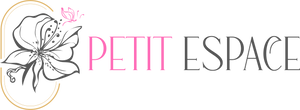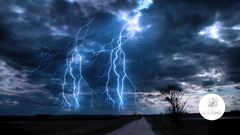Have a question? Reach out to us at: ceo@mypetitespace.com
Healthy Compartmentalizing

Healthy Compartmentalizing
Have you ever faced a traumatic event or endured a period of intense sadness that seemed to overshadow every aspect of your life?
At some point, we all encounter such challenges. Trauma, grief, and sadness can overwhelm us, leaving us feeling lost and struggling to cope with the complexities of our emotions. Despite the turmoil, the world continues to turn, and we must find the strength to keep living.
Here are the wise words of Alex Honnold, renowned for his remarkable solo rock climbing achievements.
"Sometimes you've got to compartmentalize in order to stay sane in this world."
Especially during turmoil, the concept of compartmentalizing becomes a powerful tool for healing and regaining control over our mental and emotional well-being. But what does it truly entail, and how can we utilize it to promote healing and growth?
I want to preface the following paragraphs by stating that I'm not a trained professional in mental health. This blog reflects my interpretation of the concept and my personal experiences. From my understanding, compartmentalizing trauma or sadness involves creating mental boundaries to separate painful experiences from the rest of our lives. It's like putting those emotions in a box, acknowledging their existence without allowing them to consume us entirely.
Growing up, I naturally learned how to compartmentalize to cope with the accident I suffered when I was a teenager. It became a reflexive coping tool, shielding me from being consumed by self-pity, resentment, and helplessness. For years, it worked like a charm, allowing me to focus on achieving my goals and advancing in life.
However, with time, I came to realize that band-aiding an infected wound only works for so long before it turns into a bigger problem. Recognizing this, I began openly discussing the emotions tied to the accident. Not to dwell on them, but to expose and sort through them. I confronted my resentment towards the driver, grappled with the grief of becoming disabled, and mourned the loss of a 'normal' teenage experience. I confronted the jealousy towards friends who hadn't seen their dreams shattered, and I faced my guilt and self-resentment for the circumstances I found myself in.
Bringing all these emotions out in the open was a transformative experience for me. It was healing. It allowed me to acknowledge and process what I had been bottling up for so long. Through this journey of self-discovery, I learned the power of vulnerability and the importance of confronting our deepest pains. It wasn't easy, but it was necessary for my growth and well-being.
The accident, however, was not the only trauma, disappointment, or sadness I've faced in my life. I'm in my fifties, so I've encountered a collection of such experiences.
I realized that I was able to cope with the accident pretty well. However, at some point, I acknowledged other intense emotions related to ongoing situations beyond my control. These emotions couldn't be neatly compartmentalized without granting myself the right to feel them. I came to understand the distinction between unhealthy compartmentalization and healthy compartmentalization.
Putting personal experiences aside, let's examine the insights gained. With these reflections in mind, I've made some behavioral adjustments. Here are two tips that have been effective for me in applying healthy compartmentalization to navigate trauma or sadness:
Behavior adjustment # 1 - Acknowledging Painful Experiences: It is well known that the first step in healing is acknowledging the presence of trauma or sadness in our lives. It's the "fact" – is it a diagnosis, a divorce, the end of a relationship, the loss of someone, a dysfunctional relationship, or a childhood trauma? We all must fill in the blanks. It's essential to confront these emotions head-on and recognize their impact on our mental and emotional well-being, most importantly, the impact on our behavior and what we are reaping out of those behaviors. By acknowledging our pain, we create space for healing and growth to take place.
Behavior adjustment # 2 - Create Safe Emotional Spaces: Our emotions exist for us, and they are real. After acknowledging their existence, it is crucial to allow them to breathe in their environment without contaminating the inevitable, unstoppable reality of our ongoing lives. Just as we would create physical compartments to organize our belongings, we must create safe emotional spaces to process our trauma or sadness. Some people find solace in journaling, engaging in creative expression, or seeking support from a therapist or support group. I prefer to create several safe spaces, avoiding dependence on a single one. By doing so, I permit myself to explore my emotions without fear of judgment or shame.
While it's important to acknowledge our emotions and find safe spaces to allow ourselves to feel and sort them, it's equally important to give ourselves time to heal. Each person's journey is unique, and we are the captains of our ships, ultimately responsible for the outcomes of our choices.
Healing from trauma or sadness is a journey, and it's okay to take things one step at a time. Allow yourself grace and patience as you navigate the ups and downs of the healing process. The important thing is to always aim forward, determined to persevere.
The takeaway, my dear reader friend, is this: Healthy compartmentalizing can be a valuable tool for navigating trauma or sadness and reclaiming control over our emotional well-being. By acknowledging our painful experiences, creating safe emotional spaces, and setting aside time for healing, we empower ourselves to move forward with resilience and strength.
Now let me ask you this: Are you ready for a behavior adjustment?
PICTURE: If you are curious about the picture, they are sandstone formations called the Malaspina Galleries on Gabriola Island, Canada. They look like little compartments! A special thanks to my spiritual sister Lavern for allowing me to use one of her exclusive photographs to illustrate this blog! Luv ya Lavern! Keep taking beautiful pictures and sharing them with the world.
PS: Do you like this blog? Please share it and check out Mon Espace+, our rapidly growing platform of self-care collaborators. With our community of like-minded individuals, you'll have access to a wealth of resources, support, and inspiration to help you on your journey. And don't forget to check out my corner in the Self-Help Category - Your Upward Journey: It's Easier Than You Think! with my informal guidance, you'll be well on your way to becoming the best version of yourself.
← Older Post Newer Post →
1 comment
Leave a comment
Recent Post
Plowing Through E...
The Gift of Livin...
Rest and Health: ...
Archive
- July 2024
- June 2024
- May 2024
Tags
- #BrainTraining #Neuroplasticity #MindTransformation #BelieveInYourself #ReprogramYourMind #PositiveChange #MeditationBenefits #SleepHealth #PersonalGrowth #ChallengeYourself
- #Compartmentalize #TraumaHealing #EmotionalWellness #SelfDiscovery #Resilience #CopingStrategies #MentalHealthAwareness
- #Faith #TransformativePower #PersonalGrowth
- #Food #HealthyEating #MindfulLiving #Balance
- #Friendship #Authenticity #Boundaries #Vulnerability #Relationships #EmotionalSupport #PersonalGrowth #Trust #SelfReflection #HealthyFriendships #SocialAnxiety #Connection #FriendshipGoals #TransformativePower #FriendshipJourney
- #HealingJourney #EmotionalLiberation #Mindfulness #ActiveListening #Forgiveness #InnerPeace #SelfGrowth #PositiveChange #PersonalDevelopment #WeekendReflection
- #LifeBalance #EmbraceDichotomy #JoyAndSorrow #FindMeaning #GratitudeJourney #BeautyAndPain #LifesComplexity
- #LifeBalance #SelfCare #WorkLifeBalance #Priorities #FamilyFirst #Reflection #Mindfulness #Harmony #PersonalGrowth #WeekendReflections
- #metime #selfcare #wellnessjourney #selfdiscovery #prioritizeyourself #passionpursuit #soloadventures #mindfulness #weekendvibes #rejuvenation #sparkreignited #intentionalliving
- #Positivity #Mindfulness #Gratitude #Happiness #Optimism #SelfImprovement #PositiveThinking
Custom Menu

- 2023 Petit Espace ©
- Terms and Conditions






Great message today